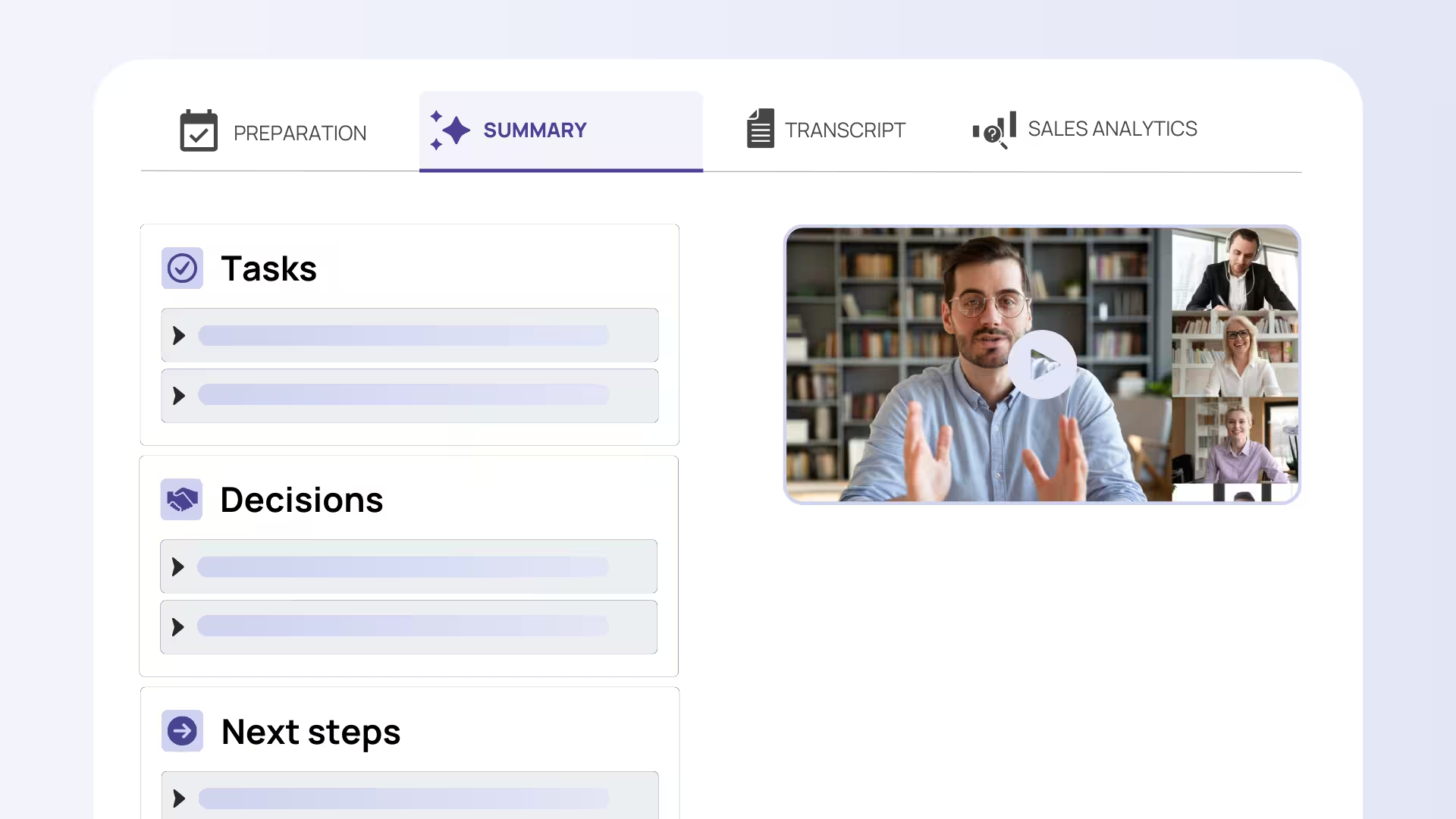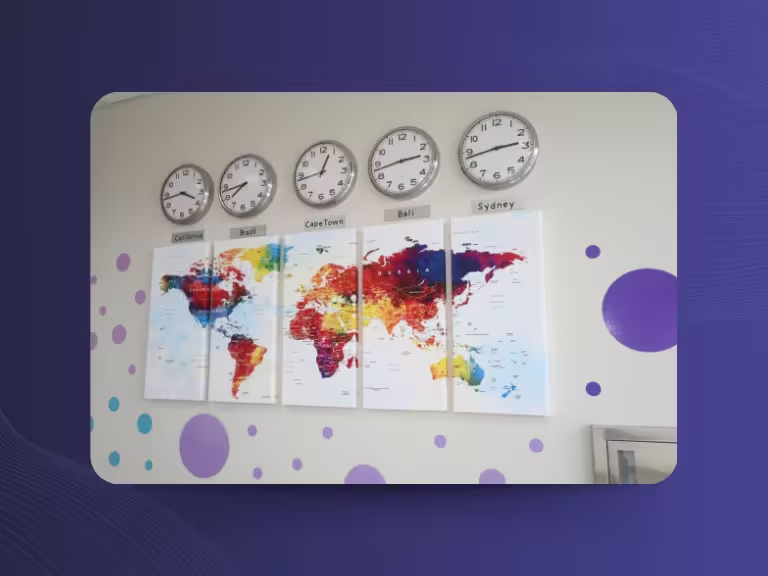Table of Contents
The world is becoming increasingly interconnected, and as a result, teams today more frequently work together across multiple time zones. What used to be the exception has now become everyday reality for many companies. However, this development brings with it some challenges: How do you coordinate meetings when one colleague is just having their morning coffee while another has already finished work for the day? How do you ensure that important information doesn't get lost? And how do you manage to develop a genuine team culture even though you might never meet in person?
In this article, you'll learn how to master these challenges. We'll look at the main stumbling blocks that can occur when working across time zones and provide you with concrete strategies. We'll also show you which tools can help you build successful asynchronous communication while maintaining a healthy work-life balance.
Challenges of Working Across Time Zones
Time Barriers and Asynchronous Communication
Imagine you send an urgent email to a colleague in Australia at 10 AM. There, it's already 8 PM and they've long since finished work. The response doesn't come until the next day, leading to delays in project progress. You're probably all too familiar with this situation.
Different core working hours are one of the biggest factors that make working across time zones difficult. While your team in Germany works from 9 AM to 5 PM, your colleague in San Francisco only starts their workday at 6 PM German time. The overlap of working hours is minimal – sometimes only a few hours.
These time barriers frequently lead to information loss. Important decisions are made in a meeting that not all team members can attend. Misunderstandings arise because the context of a message isn't fully transmitted. A simple "We'll discuss this tomorrow" can mean for a colleague in another time zone that they have to wait a whole day longer.
Cultural Differences and Their Impact on Collaboration
Time zones are only part of the equation. Cultural differences significantly amplify the complexity of working across time zones. While Germans often communicate very directly, colleagues from Asian countries frequently prefer indirect communication. What sounds like a clear statement to you might seem rude or too dominant to others.
A practical example: In a German-Japanese team, a German project manager notices that his Japanese colleagues rarely express criticism openly. Later he learns that they indeed had concerns, but communicated them in a very subtle way that he didn't understand. Such misunderstandings can result in costly mistakes.
The significance of holidays and working hours also varies greatly. While in Germany work ends promptly at 5 PM, colleagues in the US often work longer but have more flexible break times. These cultural differences significantly influence team dynamics and can lead to frustration if not taken into account.
Psychological Stress and Work-Life Balance
Working across time zones can be psychologically stressful. Many team members feel isolated due to the lack of personal contact. The informal conversations at the coffee machine, which are so important for team cohesion, don't exist.
Added to this is the "always-on" mentality. When your team is distributed across multiple time zones, it seems like someone is always working somewhere. This can lead to feeling like you need to be constantly available. Studies show that 54% of employees in global teams have difficulty finding a healthy work-life balance.
Stress from irregular working hours amplifies these problems. When important calls take place at 6 AM or 10 PM, private life suffers. Long-term, this can lead to burnout and high team turnover.

Effective Strategies and Best Practices for Collaboration Across Time Zones
Time Management and Meeting Coordination
One of the most effective strategies is introducing rotating meeting times. Instead of always meeting at the same time, you alternate the hours. This week the weekly meeting is at 8 AM German time, next week at 4 PM. This prevents the same team members from always having to participate at inconvenient times.
Clear deadlines are particularly important when working across time zones. Instead of writing "by tomorrow," you should be specific: "by Thursday, 3 PM CET." Tools like World Time Buddy help keep track of different time zones and coordinate appointments.
Time buffers for asynchronous tasks are also essential. Don't plan too tightly, but consider that follow-up questions or changes can take an additional day. This reduces stress and improves the quality of results.
Communication Methods for Asynchronous Teams
The combination of different communication methods is the key to success. Written communication via Slack or Teams works well for updates and information. For more complex topics, video messages with tools like Loom are often more effective than long emails. And for important decisions, synchronous calls are still irreplaceable.
Make sure your messages are clear and comprehensible. Since immediate follow-up questions aren't possible, you should provide context and already anticipate possible questions. Good documentation is worth its weight in gold when working across time zones.
Regular status reports create transparency. Every team member should know what others are working on and what progress is being made. This prevents misunderstandings and helps keep projects on schedule.
Building Trust and Team Culture Over Distance
Virtual social events are more important than many think. Regular virtual coffee breaks, online games, or informal check-ins help build personal relationships. Tools like Donut can organize random pairings for such informal conversations.
Clear role distribution and responsibilities are particularly important when collaborating across time zones. Everyone should know who is responsible for what and whom to contact with questions. This reduces uncertainty and improves efficiency.
Regular feedback sessions promote open communication. Create a space where team members can honestly discuss challenges. What works well? What could be improved? These conversations help continuously optimize collaboration.
Technological Tools — Solutions for Optimal Collaboration Across Time Zones
Communication and Collaboration Platforms
Slack, Microsoft Teams, and Zoom are the basic equipment for working across time zones. Slack is particularly well-suited for asynchronous communication with different channels for different topics. Teams integrates seamlessly into the Microsoft ecosystem and offers strong collaboration features. Zoom scores with stable video conferences and is reliable even with poor internet connections.
Asynchronous video messages with Loom are a real insider tip. Instead of writing long emails, you simply record a short video where you share your screen and explain your points. This is more personal than text and often more understandable than a written explanation.
Project Management and Scheduling Tools
Jira and Asana are popular project management tools that work well for distributed teams. They provide transparency about who is doing what by when and make it possible to keep track of projects even without daily meetings. The timeline functions help visualize dependencies and identify bottlenecks early.
Specialized tools for time zone management make daily life significantly easier. World Time Buddy shows at a glance what time it is in different time zones. Google Calendar can automatically convert between time zones and shows when your colleagues are available.
AI-Powered Solutions and Automation – Example "Sally"
AI-powered meeting assistants like Sally are revolutionizing work across time zones. Sally automatically joins meetings, creates transcriptions, and summarizes the most important points. This is particularly valuable when not all team members can participate in a meeting.
Integration into CRM and project management systems ensures that important information automatically ends up where it's needed. This way, no important decisions or agreements are lost, even if they were made in a meeting that not everyone could attend.
Sally minimizes time zone conflicts by automatically documenting important meetings and making the results available to all participants (and others, if you want). This reduces the need to communicate the same information multiple times across different time zones.

Practical Examples and Long-term Tips for Sustainable Team Dynamics
Case Studies of Successful Companies
GitLab is a prime example of successful work across time zones. The company has over 1,300 employees in more than 65 countries and works completely remotely. The success factor lies in thorough documentation: everything is recorded in writing, from meeting notes to decision processes. The GitLab handbook comprises over 5,000 pages and is publicly accessible.
Automattic, the company behind WordPress, follows a similar approach. They use asynchronous communication as the standard and synchronous meetings as the exception. New employees go through intensive onboarding that teaches them the company's way of working. The result: highly efficient collaboration despite global distribution.
Tips for Long-term Success in Global Teams
Regular reflection and adjustment of processes are crucial. What works today might not be optimal in six months. Plan regular retrospectives where you question and improve your way of working.
Cultural competence should be actively promoted. Awareness training helps develop understanding for different ways of working. When your team understands the cultural backgrounds of colleagues, it automatically works more harmoniously together.
Psychological support must not be forgotten. Offer your team resources for dealing with stress and isolation. These can be professional counseling services, but also simple measures like regular check-ins or flexible working hours.
Conclusion
Working across time zones is one of the biggest challenges of modern teamwork, but it's definitely manageable with the right strategies. The most important success factors are clear communication, thoughtful time management, and the conscious cultivation of team culture despite physical distance.
Technology plays a central role in this. From communication platforms like Slack to AI-powered solutions like Sally – the right tools can make the difference between chaos and efficient collaboration. Particularly important is the documentation of meetings and decisions so that all team members stay on the same page.
Don't forget the human component. Cultural sensitivity, regular social interactions, and support in dealing with the psychological challenges of distributed teams are just as important as the technical infrastructure.
Start with small steps: introduce rotating meeting times, improve your documentation, and experiment with different communication methods. The examples from companies like GitLab and Automattic show that highly efficient asynchronous collaboration is possible – you just need to start implementing the best practices in your team.

Try meeting transcription now!
Experience how effortless meeting notes can be – try Sally free for 4 weeks.
Test NowOr: Arrange a Demo Appointment

.avif)


